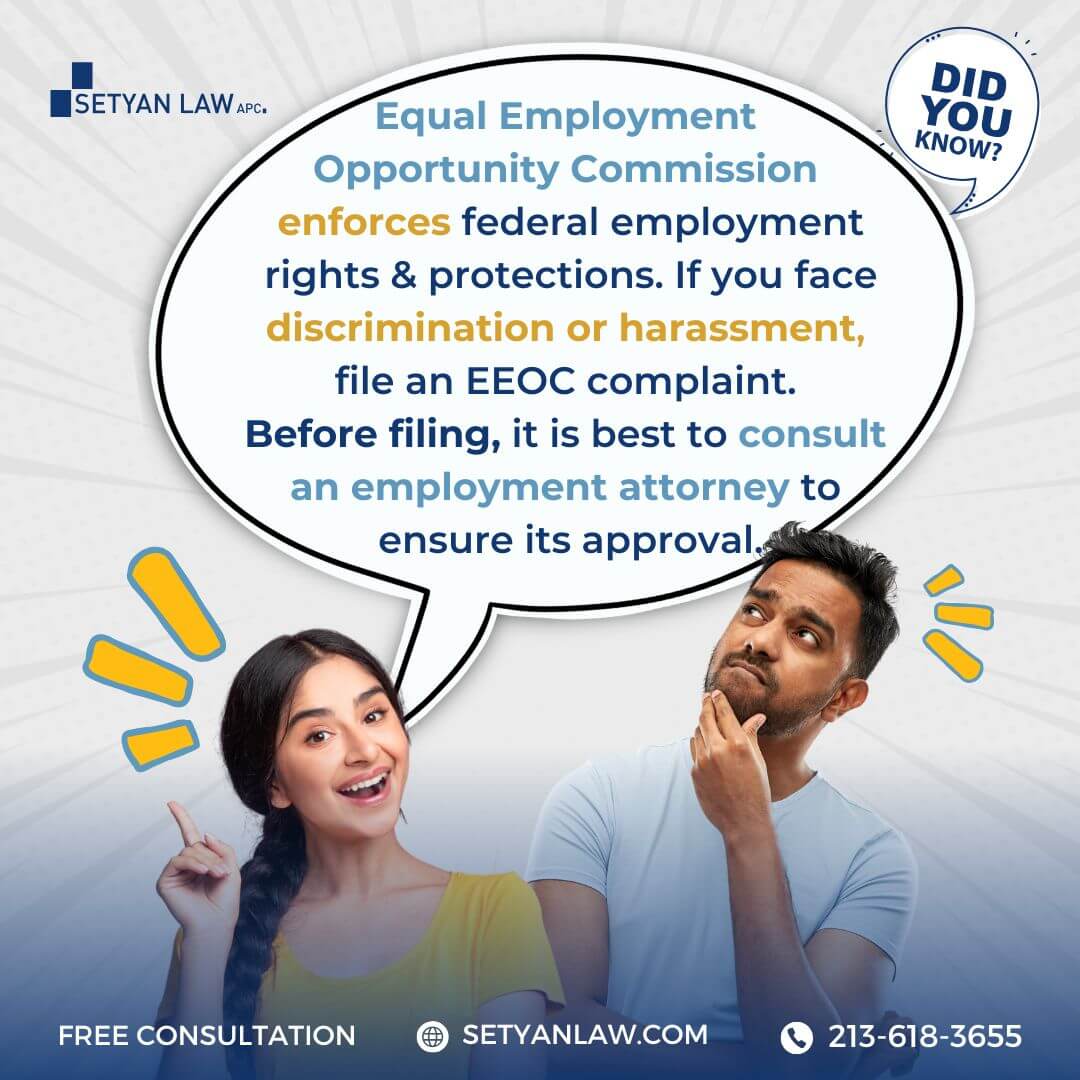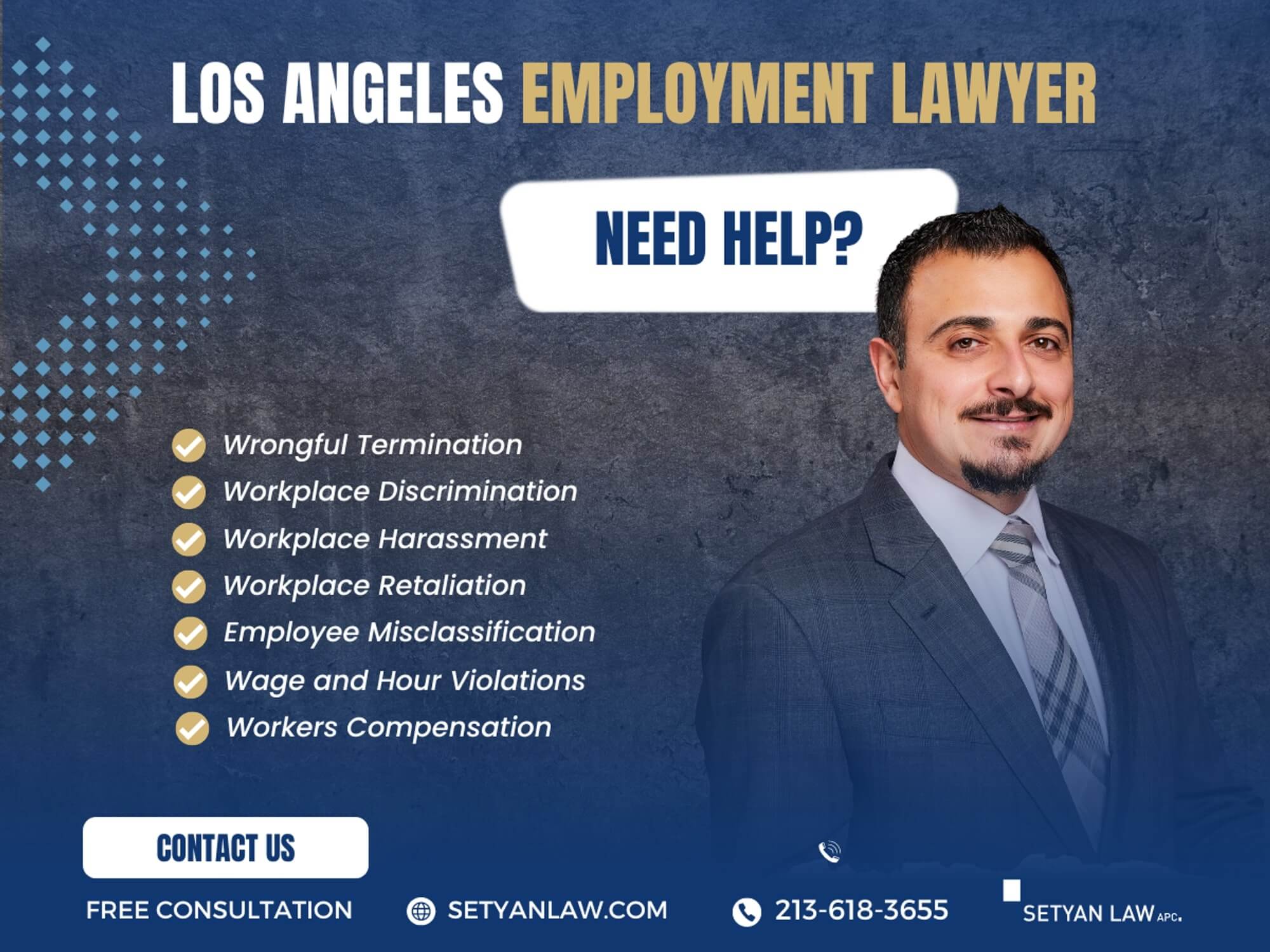Updated September 11, 2025
Filing an EEOC Complaint After Quitting A Job
Navigating workplace harassment or discrimination can be daunting, especially when considering the implications of leaving your job. Many individuals wonder if they can still pursue an Equal Employment Opportunity Commission (EEOC) complaint after resigning. This article will explore the nuances of this process, the potential risks and benefits, and the steps you should take to protect your rights.
Understanding Your Rights
When dealing with workplace harassment or discrimination, it’s crucial to recognize your rights under federal law. The EEOC enforces several laws that prohibit employment discrimination based on race, color, religion, sex, national origin, age, disability, and genetic information. If you believe you have been subjected to any form of discrimination or harassment, understanding your rights is the first step in addressing the issue.
Working from California? Call (213)-618-3655 to schedule a free consultation.
Federal Protections
Under Title VII of the Civil Rights Act of 1964, employees are protected against various forms of discrimination. This law applies to employers with 15 or more employees, making it essential for those in larger organizations to be aware of their rights. If you have experienced harassment that you believe violates this law, you may have grounds for a complaint, even if you have left your job.
State-Specific Protections
In addition to federal protections, many states, including California, have their own laws that offer broader protections. These laws may cover additional categories of discrimination, such as sexual orientation or gender identity. Familiarizing yourself with both federal and state laws will help you understand the full scope of your rights.
California Workers: Call Setyan Law at (213)-618-3655 to schedule a free consultation.
Filing an EEOC Complaint After Quitting
If you’re contemplating filing an EEOC complaint after leaving your job, it’s essential to understand the process and its implications. Even though you may feel that quitting was your only option, you still have the right to pursue legal action.
The Process of Filing a Complaint
Gather Evidence: Document any incidents of harassment or discrimination that occurred while you were employed. This documentation should include dates, times, locations, and descriptions of events. If possible, collect any relevant emails, texts, or witness statements that can support your case.
Consult an Attorney: Before filing a complaint, it’s advisable to consult with an experienced employment attorney. They can help you understand your rights, evaluate the strength of your case, and guide you through the process.
File Your Complaint: You can file a complaint with the EEOC online, by mail, or in person. The EEOC typically requires that you file your complaint within 180 days of the alleged discriminatory act. However, this deadline may be extended to 300 days if your state has its own anti-discrimination law.
Risks and Benefits of Filing After Quitting
Filing an EEOC complaint after resignation can come with both risks and benefits. Understanding these factors can help you make an informed decision.
Risks
Limited Evidence: After leaving your job, it may be more challenging to gather evidence to support your claim. The absence of direct witnesses or company records can weaken your case.
Compensation Limitations: Quitting might limit your eligibility for certain types of compensation, such as back pay. If the EEOC determines that your employer had effective anti-harassment policies in place that you did not utilize, it may impact your claim.
Benefits
Accountability: Filing a complaint can hold your former employer accountable for their actions, potentially leading to changes in workplace policies and practices.
Emotional Relief: Taking legal action can provide a sense of closure and empowerment, allowing you to move forward after a difficult experience.
California Workers: It’s always best to consult a qualified Employment Attorney regarding your EEOC complaint before you file. Employment law has many pitfalls and an attorney can help you navigate past them safely. Sam Setyan will review your grievance, tell you your options, and guide you to the most favorable outcome possible. It’s your call.
Call 213-618-3655 for a free consultation.
Constructive Discharge: A Special Consideration
If your work environment was so intolerable that you felt you had no choice but to resign, you may have a claim for constructive discharge. This legal concept applies when an employer creates a hostile work environment, forcing an employee to quit.
Proving Constructive Discharge
To establish a constructive discharge claim, you must demonstrate that:
- The work environment was severely hostile or abusive.
- You reported the harassment to your employer, and they failed to take appropriate action.
- The conditions were so intolerable that a reasonable person would have felt compelled to resign.
If you can successfully prove constructive discharge, it may strengthen your case when filing an EEOC complaint.
The Importance of Following Company Policies
Before quitting, it’s crucial to follow your employer’s anti-harassment policies. Most companies have procedures in place for reporting harassment or discrimination. Documenting your complaints and giving your employer a chance to address the issue can significantly bolster your case.
Reporting Procedures
Notify HR: If you experience harassment, report it to your Human Resources department or a designated company representative.
Document Your Complaints: Keep detailed records of your complaints and any actions taken by your employer in response.
Allow for Investigation: Give your employer an opportunity to investigate your claims. If they fail to take appropriate action, it may strengthen your case for constructive discharge.
Retaliation Protections
It’s essential to understand that federal law prohibits retaliation against employees who report discrimination or participate in an investigation. If you quit due to retaliation, you may still have legal protections.
Recognizing Retaliation
Retaliation can take many forms, including:
Demotion or Pay Reduction: If you experienced a decrease in pay or a demotion after reporting harassment, this may be considered retaliation.
Negative Performance Reviews: If your performance evaluations became unfavorable after reporting an issue, it could indicate retaliatory behavior.
If you believe you have faced retaliation, consulting an attorney can help you determine the best course of action.
The Role of an Employment Attorney
Navigating the complexities of employment law can be challenging. An experienced employment attorney can provide invaluable assistance throughout the process of filing an EEOC complaint.
Benefits of Legal Representation
Expert Guidance: An attorney can help you understand your rights, evaluate your case, and determine the best approach for filing your complaint.
Preparation of Documentation: They can assist in gathering evidence and preparing your complaint to ensure it meets all legal requirements.
Representation During Hearings: If your case proceeds to mediation or a hearing, an attorney can represent you and advocate for your rights.
Conclusion
If you find yourself asking, "Can I file an EEOC complaint after I quit?" the answer is yes. While there are risks involved, understanding your rights and the legal process can empower you to take action. Whether you are considering filing a complaint or seeking legal counsel, remember that you have the right to pursue justice and accountability for workplace harassment or discrimination.
For more assistance, consider reaching out to an experienced employment attorney who can guide you through the process and help you achieve the outcome you deserve. Your rights matter, and you do not have to navigate this journey alone.
California Workers: Call Setyan Law at (213)-618-3655 to schedule a free consultation.








